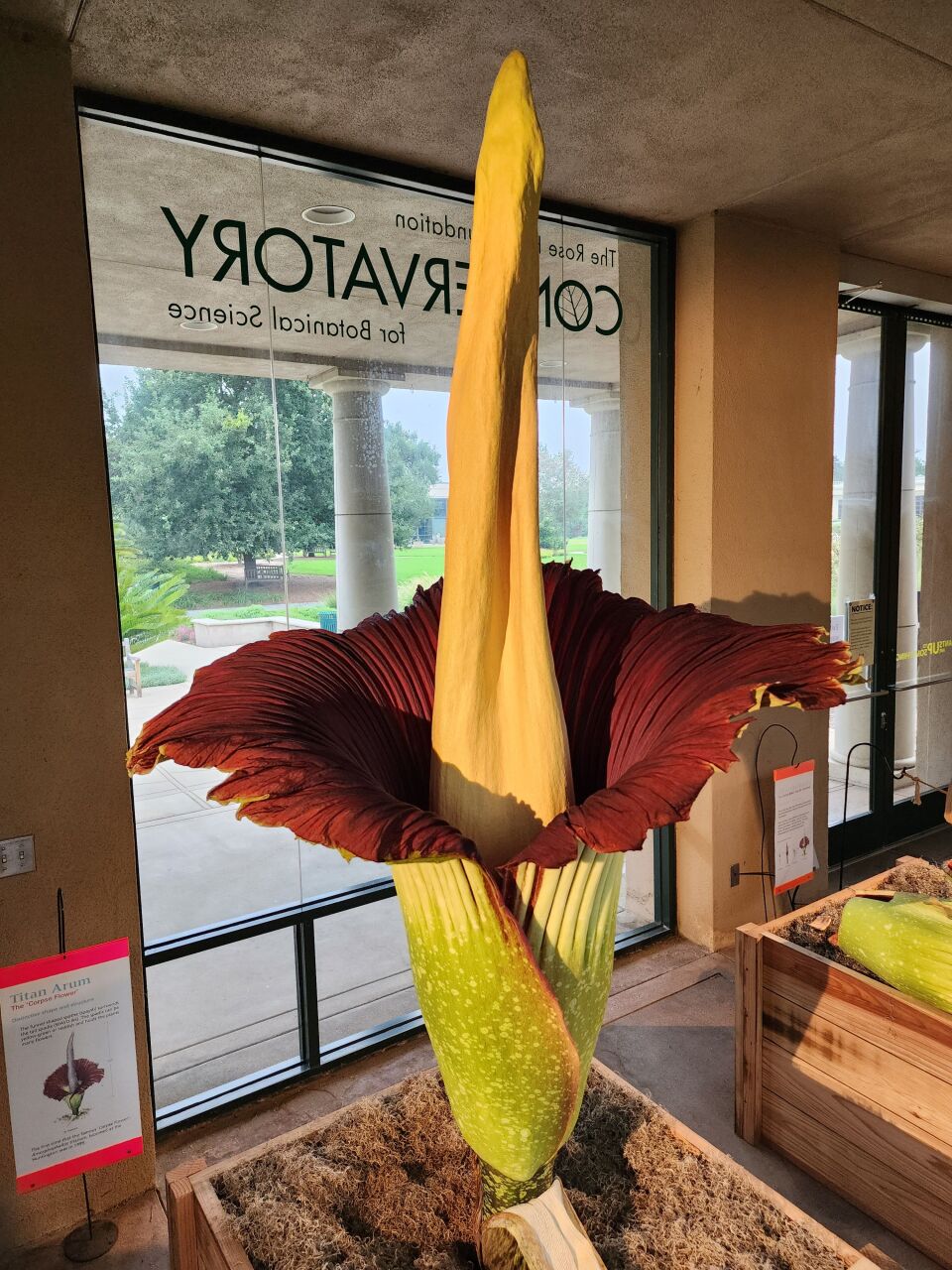Truth matters. Community matters. Your support makes both possible. LAist is one of the few places where news remains independent and free from political and corporate influence. Stand up for truth and for LAist. Make your year-end tax-deductible gift now.
The Huntington’s corpse flower causes a stinky scene each year. Why do hundreds of visitors keep coming back?

It’s hot, it’s sticky, and it smells like death. But time and again, hundreds of visitors flock to The Huntington Library’s muggy conservatory each year to see the infamous corpse flower. This year it’s expected to bloom and emit its putrid odor around July 22.
So, why do people line up to see this giant flower unfurl?
First thing’s first — the corpse flower typically only blooms once every few years. But the Huntington has a collection of more than 40 of them, so at least one is in its bloom cycle every year. Some people come just to catch a whiff of the plant, which gives off a rotten, decaying smell. Others want to catch a glimpse of the bloom that lasts for just a day or so.
And then there are the people who expect something more elegant and graceful, like a big rose.
“Then they smell it, and the reactions are hilarious,” said Brandon Tam, a curator who oversees horticultural operations at the Huntington. “They see this gigantic plant. It's huge and it's funky looking. It's almost alien-like. … People are disgusted by it. They're amazed by it. They're intrigued by it.”
What’s the big deal?
For starters, the plant is massive. It's been called the largest flower in the world, but it's actually an inflorescence — that’s botany speak for a plant that holds many flowers. It can grow up to 12 feet high, 4 feet wide, and at its peak development, the monster can grow 6 inches per day.
It blooms just once every two to three years, according to Tam, and only for a day before it starts to wilt. It happens even less frequently in the wild, where there are fewer than 1,000 corpse flowers left, according to the U.S. Botanic Garden.
But thanks to conservationists, a corpse flower now blooms many times a year at the Huntington’s Rose Hills Foundation Conservatory for Botanical Science, where they’ve successfully cultivated 43 specimens since 1999.

What the heck is that smell?
Against our better judgment, most of us want to sniff this thing. Tam couldn’t explain why, but he said it's definitely the biggest draw to the tropical plant native to Sumatra and Indonesian rainforests.
“People compare it to gym socks, runny eggs, things like that. So it's actually quite pungent,” Tam said.
The plant has evolved to emulate the scent of rotten flesh, and it does a good job of it. As it turns out, flesh flies and carrion beetles are drawn to the stench.
“The plant being so devious, it's trying to mimic that to attract pollinators in hopes that they will pollinate it, and of course, produce fruits and then seeds.”
How to see (or smell) the flower
Though the flower is expected to bloom sometime in the next 10 days, factors like heat and cloud cover can make the exact timing hard to predict. The Huntington sends updates on expected blooms on their website so you can plan your trip to the grounds in San Marino.
But if you'd rather watch the flower bloom from afar — sans stench — you can check a livestream here.







